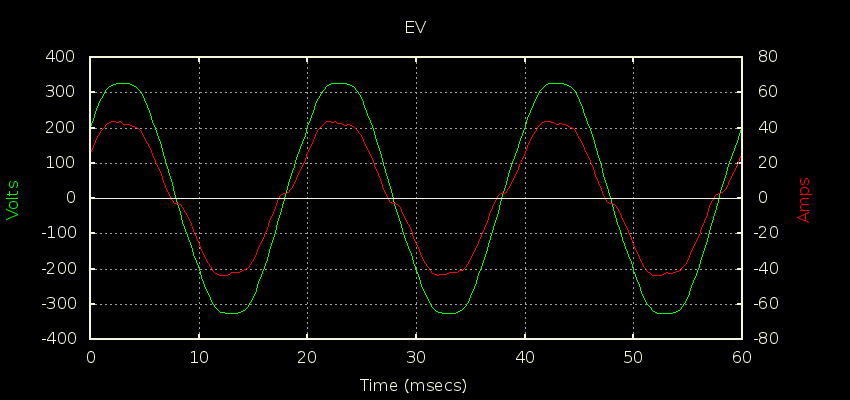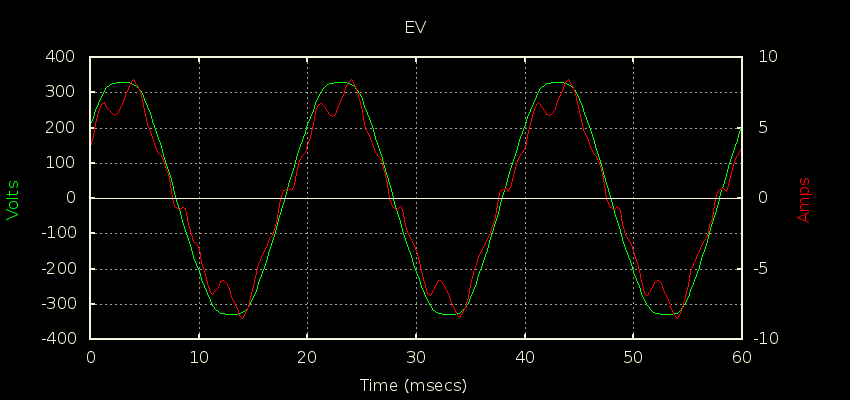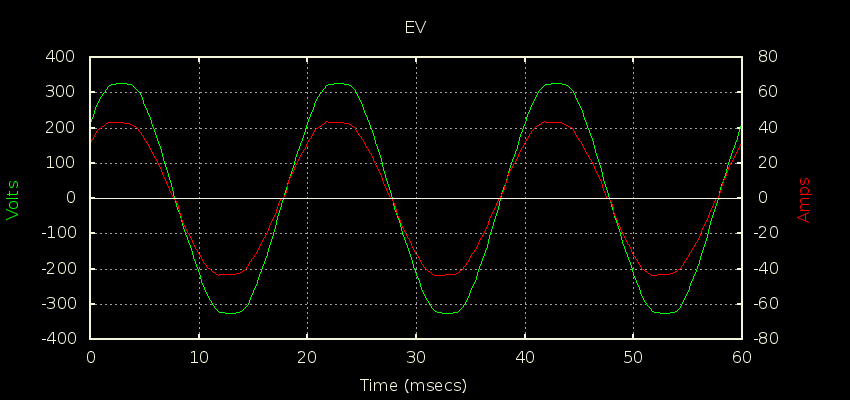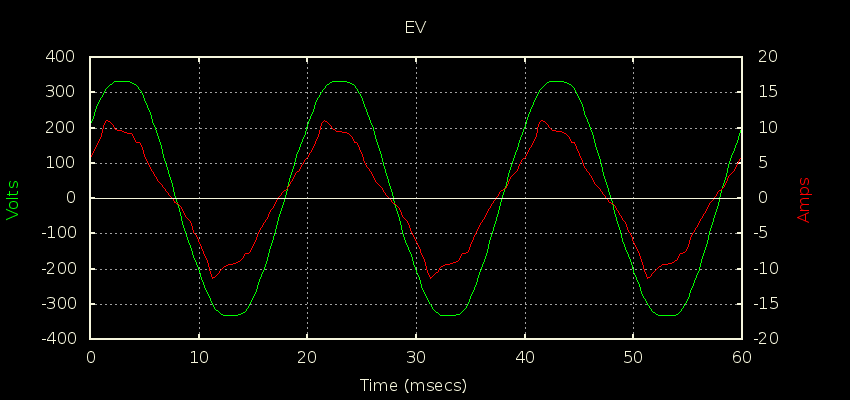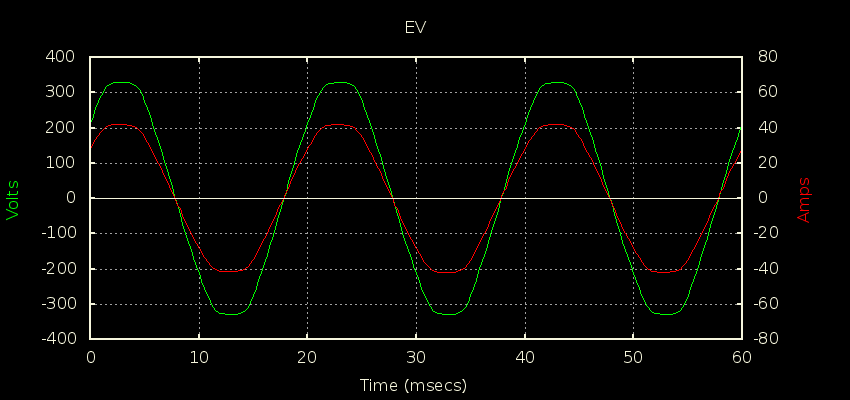I’m not sure how your supply compares to ours, but I see about a 5V drop when the EV starts sucking 32A. That’s measured at the fuse box so doesn’t include any additional drops in the run to the EVSE (single phase setup).
I also had a chance recently to capture the current signatures of the on-board chargers of a few different EVs at various power levels:
MG ZS charging at 30A (though 32A was on offer)
MG4 charging at 30A (though 32A was on offer)
Tesla Model 3 charging at 32A
Tesla Model 3 charging at 5A
EQC 400 charging at 32A
EQC 400 not charging, but pre-heating the cabin
Volvo XC40 at 32A
Volvo XC40 at 16A
Volvo XC40 at 6A

